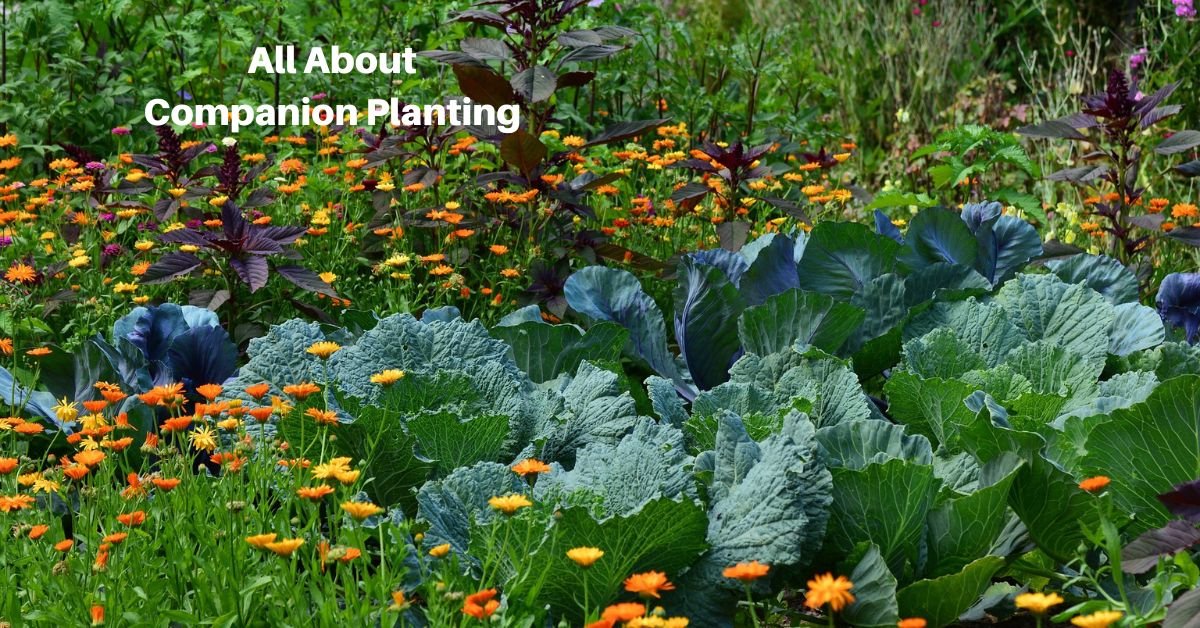The ancient practice of companion planting has long been revered for its ability to enhance the beauty and productivity of gardens. Rooted in indigenous knowledge and later confirmed by scientific research, companion planting offers a harmonious approach to cultivating a diverse array of plants that support each other’s growth.
This method promises a garden that’s a feast for the eyes and boasts an impressive yield. By understanding and implementing the principles of companion planting, gardeners can unlock the full potential of their green spaces.
The Principles of Companion Planting
At its core, companion planting is about creating plant partnerships that bring mutual benefits. These benefits range from deterring pests naturally and enhancing pollination to optimizing space usage and enriching the soil. The underlying philosophy is that plants can support each other’s growth in a diverse ecosystem, leading to a healthier, more productive garden.
One critical advantage of companion planting is its ability to foster biodiversity. By integrating a variety of plants, gardeners can mimic natural ecosystems, which are inherently resilient and self-sustaining. This diversity not only contributes to the ecological health of the garden but also to its aesthetic appeal.
Companion Planting for Beauty
A garden is a sensory experience, and companion planting can significantly enhance its visual appeal. Gardeners can create stunning visual compositions by thoughtfully pairing plants based on their colors, textures, and growth habits. For example, the delicate foliage of ferns can beautifully offset the bold, architectural lines of taller grasses. Similarly, the bright blooms of marigolds can provide a striking contrast to the green hues of vegetable plants, adding vibrancy and interest.
Companion Planting for Yield
Beyond aesthetics, companion planting is a strategic tool for increasing garden yield. Certain plant combinations can improve pollination rates, producing a more abundant harvest. For instance, planting flowers alongside crops attracts pollinators essential for fruit and vegetable production.
Some plants can also enhance the growth and flavor of their companions. Basil, when planted near tomatoes, is known to improve the yield and taste of the tomatoes.
Beneficial Companion Planting Combinations
Several companion planting combinations have stood the test of time, offering proven benefits for garden beauty and productivity. Here are a few examples:
Tomatoes and Basil: This classic pair improves tomato yield and repels pests like flies and mosquitoes.
Carrots and Onions: Planting onions near carrots can deter carrot flies, as the smell of onions masks the scent of the carrots.
Marigolds and Vegetables: The strong fragrance of marigolds effectively repels pests, making them an excellent companion for various vegetable plants.
Overcoming Challenges with Companion Planting
While companion planting has numerous benefits, it also comes with challenges. Space management and ensuring that plants with different growth requirements coexist harmoniously are common concerns. It’s essential to plan the garden layout carefully, considering factors like sunlight, water needs, and the mature size of the plants.
Adopting companion planting comes with its learning curve and challenges, notably in managing plant diversity without creating competition for resources. Here are strategies to navigate these issues:
Research and Planning: Before planting, research the needs and compatibilities of your chosen plants. This ensures that companions have synergistic relationships, such as similar water and sunlight requirements, reducing competition.
Observation and Adaptation: Monitor your garden’s progress and be prepared to make adjustments. What works in one garden may not work in another due to different soil conditions, climates, or pest pressures.
Spacing and Timing: Pay attention to spacing guidelines and planting times to prevent overcrowding and ensure that each plant has enough space and resources to thrive.
These practices help mitigate the challenges of companion planting, allowing gardeners to cultivate a harmonious, productive garden ecosystem.
Encouragement to Experiment
Embracing companion planting is an invitation to experiment and learn from nature. Each garden is unique, and what thrives in one may not in another. Feel free to try different plant combinations, observe the results, and adjust your strategy accordingly. This hands-on approach will enrich your gardening experience and deepen your connection with the natural world.
The journey of companion planting is one of discovery and reward. By fostering plant relationships that emphasize mutual support, you can unlock new levels of beauty and abundance in your garden. Whether you’re a seasoned green thumb or a novice, companion planting offers endless opportunities to enhance your garden in sustainable, eco-friendly ways.
Companion planting represents a time-honored tradition that marries the aesthetic and productive aspects of gardening. By harnessing the natural synergies between plants, you can create a lush, vibrant garden that is as productive as it is beautiful.








